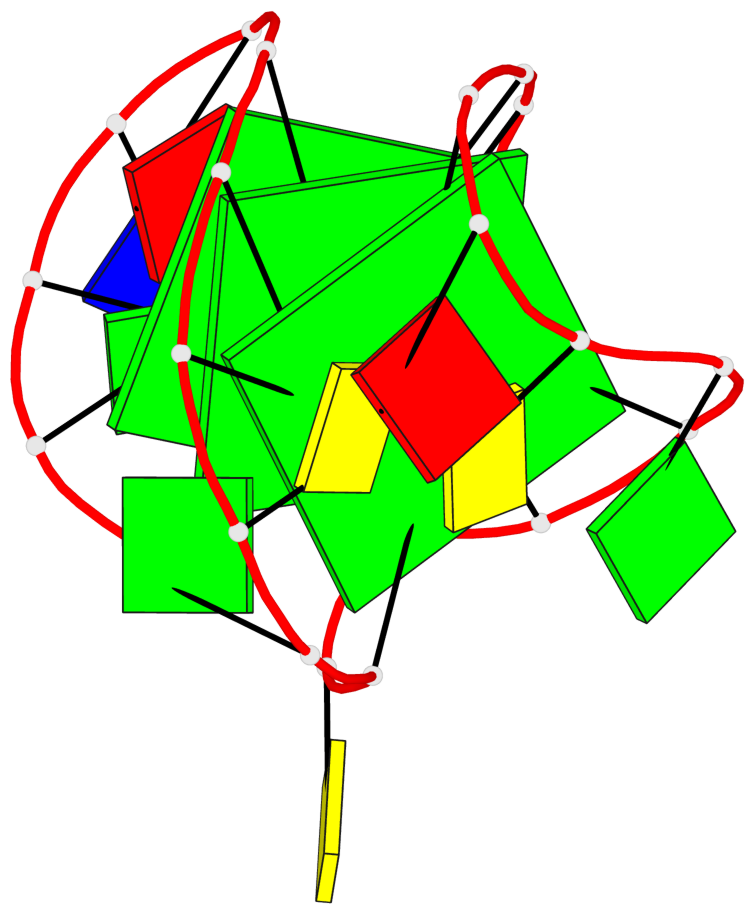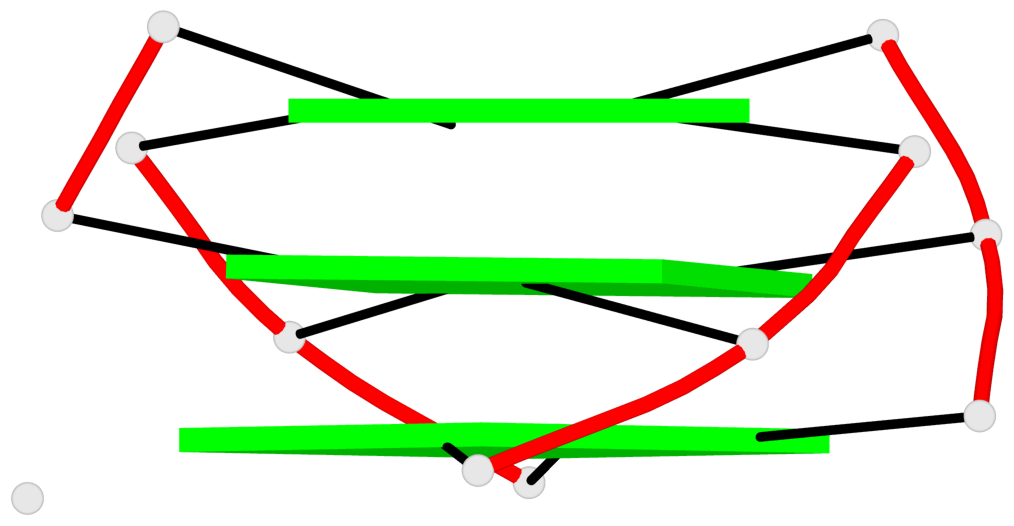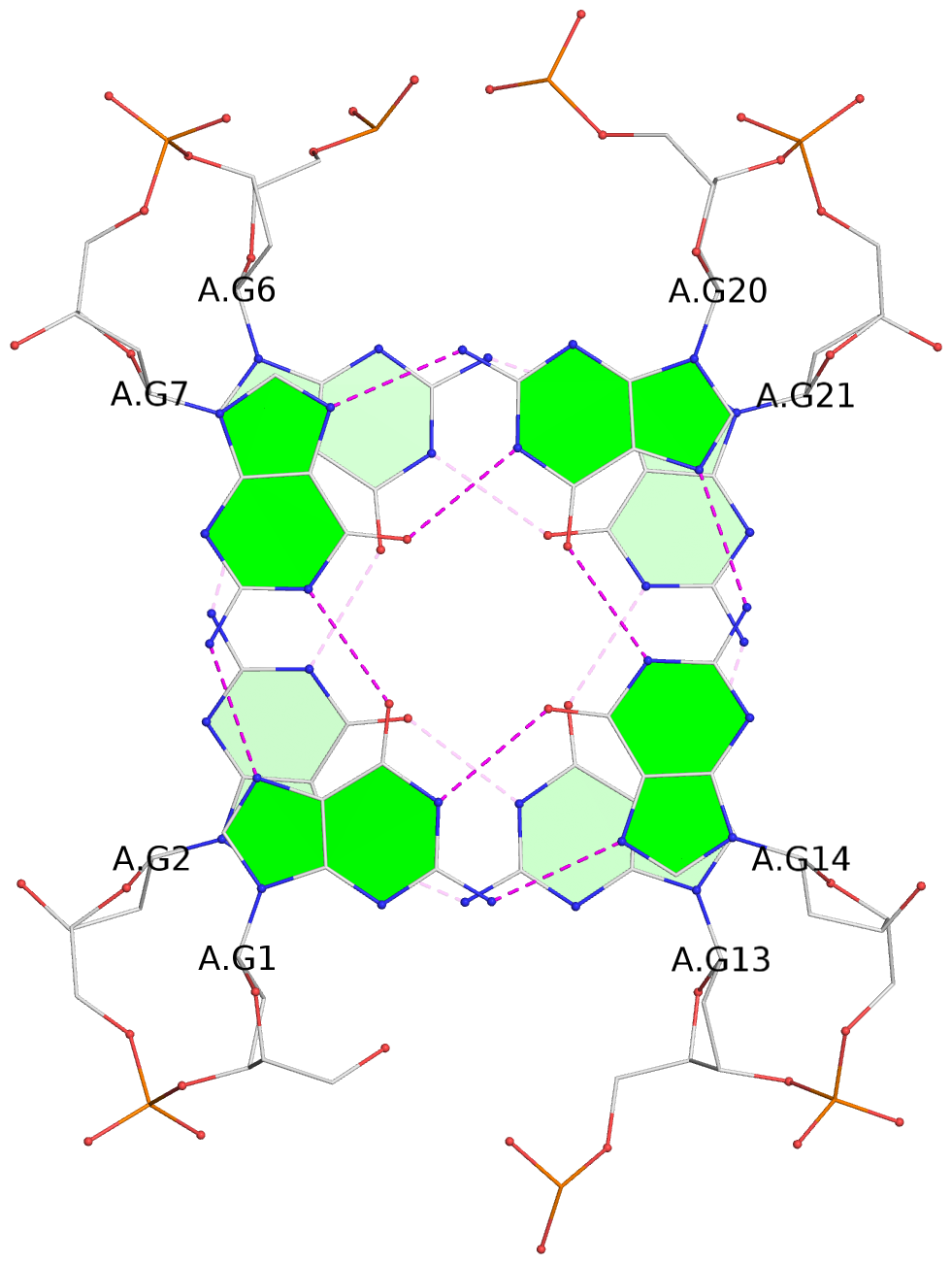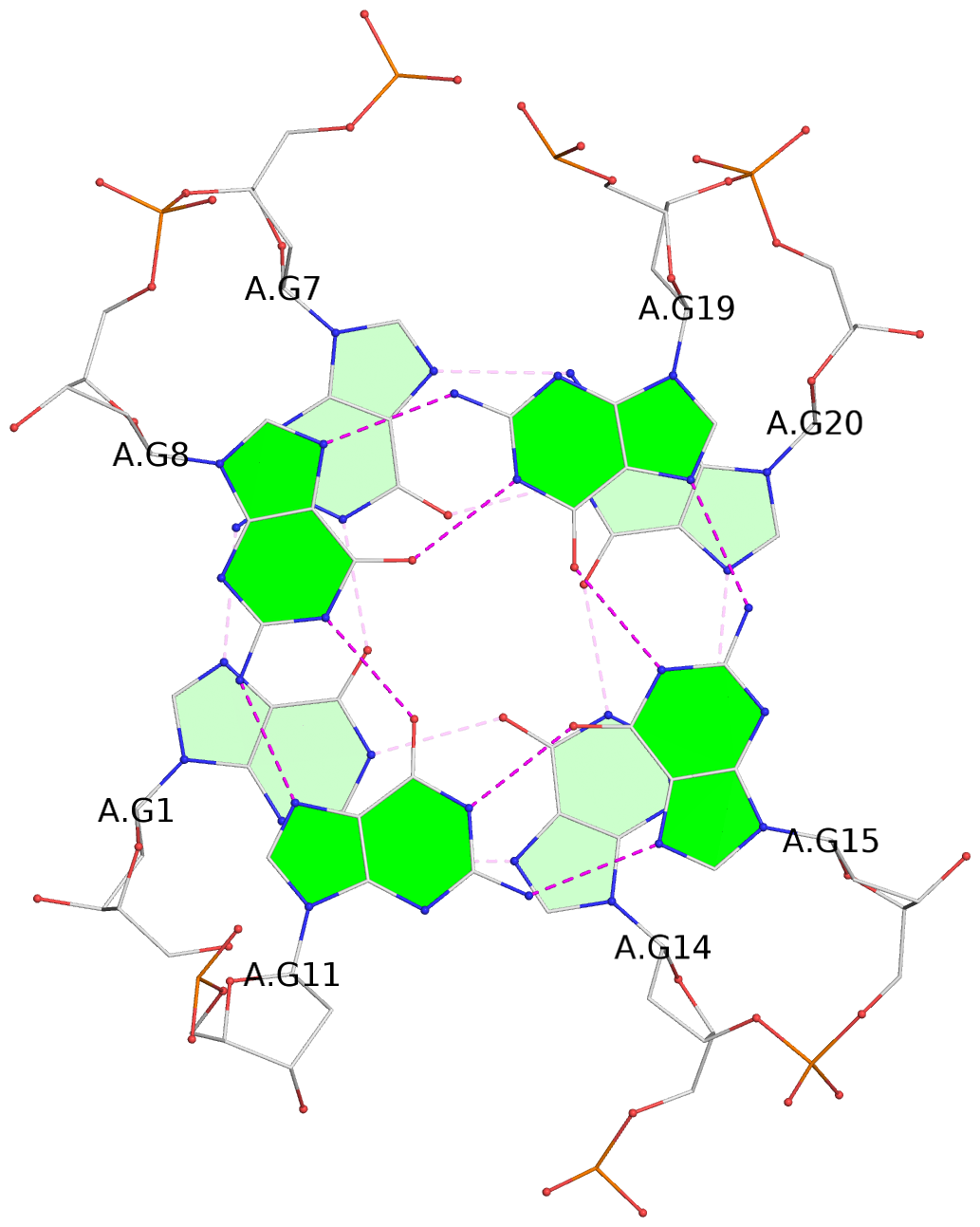Detailed DSSR results for the G-quadruplex: PDB entry 8psi
Created and maintained by Xiang-Jun Lu <xiangjun@x3dna.org>
Citation: Please cite the NAR'20 DSSR-PyMOL schematics paper and/or the NAR'15 DSSR method paper.
Summary information
- PDB id
- 8psi
- Class
- DNA
- Method
- NMR
- Summary
- G-quadruplex with a 1-nt v-shaped loop from a g-rich sequence with five g-runs
- Reference
- Vianney YM, Schroder N, Jana J, Chojetzki G, Weisz K (2023): "Showcasing Different G-Quadruplex Folds of a G-Rich Sequence: Between Rule-Based Prediction and Butterfly Effect." J.Am.Chem.Soc., 145, 22194-22205. doi: 10.1021/jacs.3c08336.
- Abstract
- In better understanding the interactions of G-quadruplexes in a cellular or noncellular environment, a reliable sequence-based prediction of their three-dimensional fold would be extremely useful, yet is often limited by their remarkable structural diversity. A G-rich sequence related to a promoter sequence of the PDGFR-β nuclease hypersensitivity element (NHE) comprises a G3-G3-G2-G4-G3 pattern of five G-runs with two to four G residues. Although the predominant formation of three-layered canonical G-quadruplexes with uninterrupted G-columns can be expected, minimal base substitutions in a non-G-tract domain were shown to guide folding into either a basket-type antiparallel quadruplex, a parallel-stranded quadruplex with an interrupted G-column, a quadruplex with a V-shaped loop, or a (3+1) hybrid quadruplex. A 3D NMR structure for each of the different folds was determined. Supported by thermodynamic profiling on additional sequence variants, formed topologies were rationalized by the identification and assessment of specific critical interactions of loop and overhang residues, giving valuable insights into their contribution to favor a particular conformer. The variability of such tertiary interactions, together with only small differences in quadruplex free energies, emphasizes current limits for a reliable sequence-dependent prediction of favored topologies from sequences with multiple irregularly positioned G-tracts.
- G4 notes
- 3 G-tetrads, 1 G4 helix, 1 G4 stem, 2(-LwX+Lw), (2+2), UDUD
Base-block schematics in six views
List of 3 G-tetrads
1 glyco-bond=s-s- sugar=---- groove=wnwn planarity=0.261 type=other nts=4 GGGG A.DG1,A.DG7,A.DG20,A.DG14 2 glyco-bond=-s-s sugar=---- groove=wnwn planarity=0.345 type=other nts=4 GGGG A.DG2,A.DG6,A.DG21,A.DG13 3 glyco-bond=---s sugar=---- groove=--wn planarity=0.160 type=planar nts=4 GGGG A.DG8,A.DG11,A.DG15,A.DG19
List of 1 G4-helix
In DSSR, a G4-helix is defined by stacking interactions of G-tetrads, regardless of backbone connectivity, and may contain more than one G4-stem.
Helix#1, 3 G-tetrad layers, INTRA-molecular, with 1 stem
List of 1 G4-stem
In DSSR, a G4-stem is defined as a G4-helix with backbone connectivity. Bulges are also allowed along each of the four strands.
Stem#1, 2 G-tetrad layers, 3 loops, INTRA-molecular, UDUD, anti-parallel, 2(-LwX+Lw), (2+2)
List of 3 non-stem G4-loops (including the two closing Gs)
1 type=lateral helix=#1 nts=4 GCGG A.DG8,A.DC9,A.DG10,A.DG11 2 type=V-shaped helix=#1 nts=5 GCGGG A.DG11,A.DC12,A.DG13,A.DG14,A.DG15 3 type=lateral helix=#1 nts=5 GGCAG A.DG15,A.DG16,A.DC17,A.DA18,A.DG19









